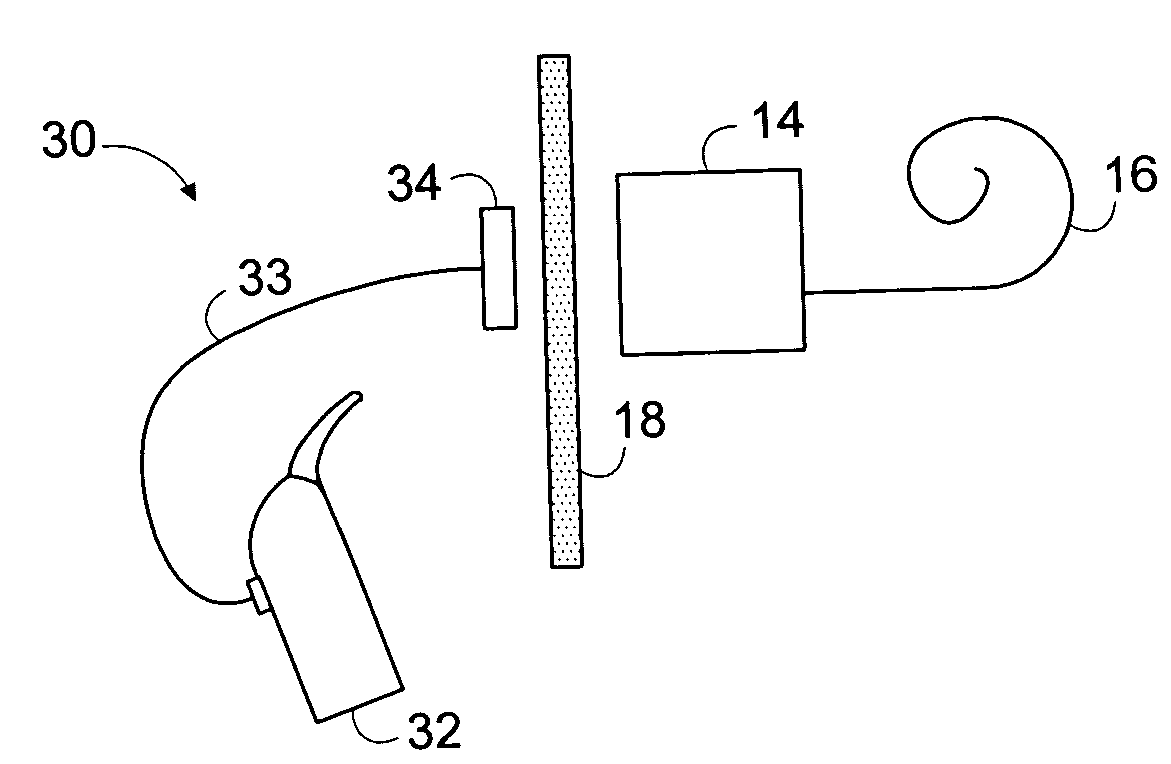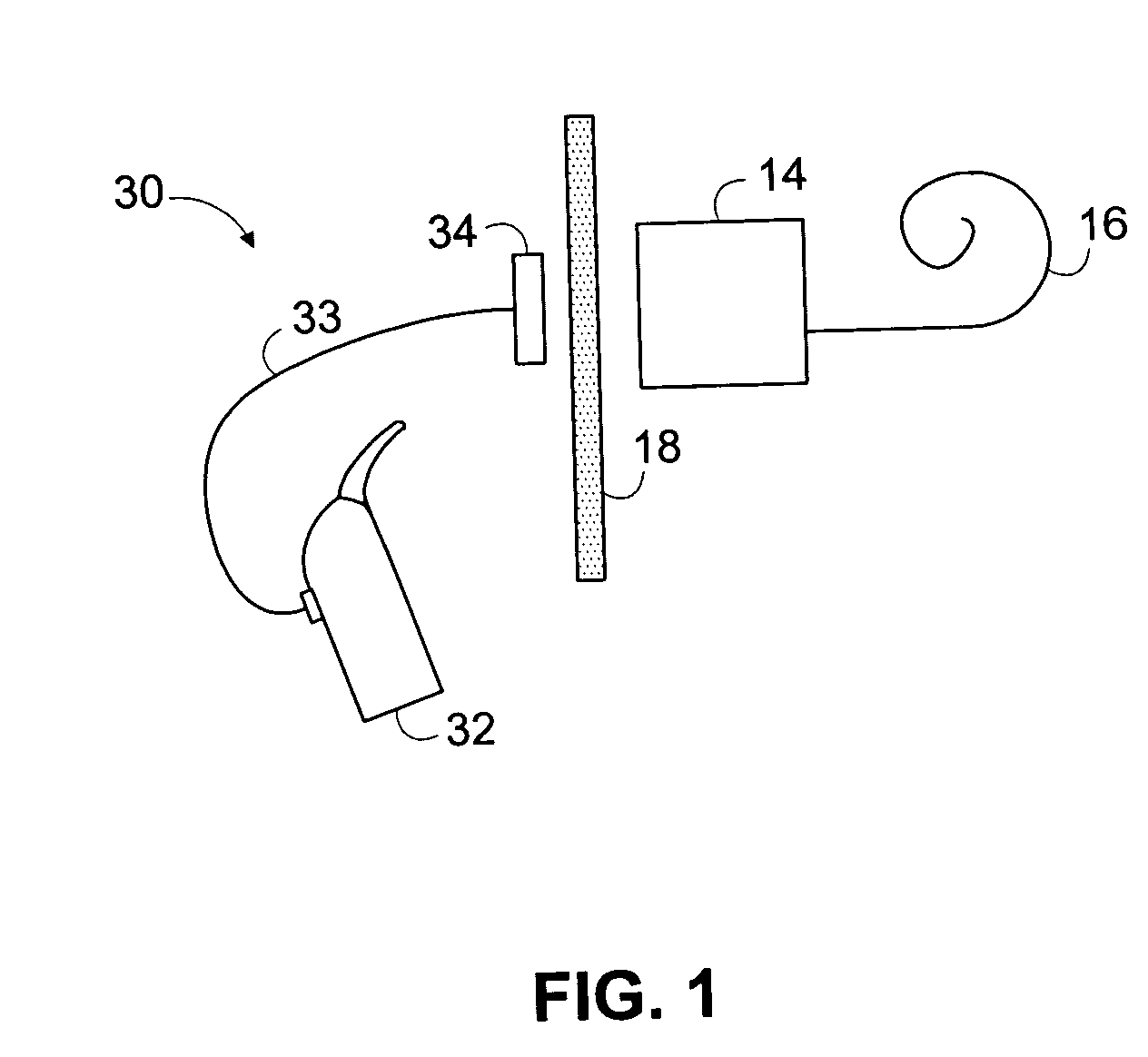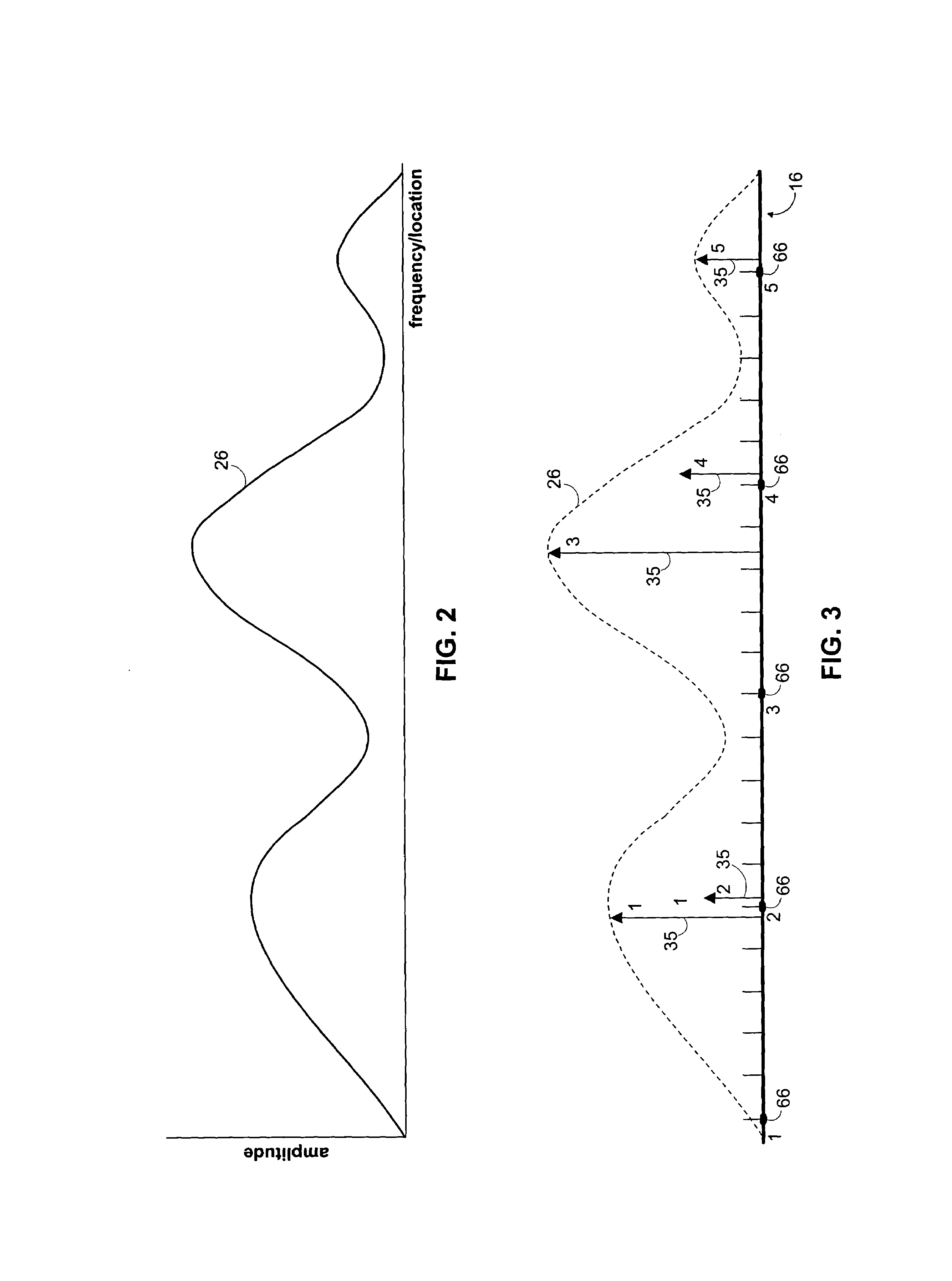Sound processing and stimulation systems and methods for use with cochlear implant devices
a cochlear implant and sound processing technology, applied in electrotherapy, therapy, etc., can solve the problems of conductive hearing loss, impede the normal mechanical pathway of sound to reach the hair cells in the cochlea, and people suffering from severe sensorineural hearing loss are usually unable to derive any benefit from conventional hearing aid systems, so as to improve frequency computation and improve time detection
- Summary
- Abstract
- Description
- Claims
- Application Information
AI Technical Summary
Benefits of technology
Problems solved by technology
Method used
Image
Examples
Embodiment Construction
[0033]FIG. 1 shows a representative block diagram of a cochlear implant system 30 that may be used in accordance with the principles of the present invention. Cochlear implant system 30 may include unit 32, portion 34, device 14 and array 16. Unit 32 and portion 34 may be coupled through cable 33 and may be external portions of cochlear implant system 30. Device 14 and array 16, on the other hand, may be implanted into a patient. The external and internal portions may be separated by barrier 18, such as a layer of skin. Alternatively, cochlear system 30 may be a fully implantable system whereby devices performing the functions of unit 32 and portion 34 are internal.
[0034]Unit 32 may be a behind the ear (“BTE”) unit that may be designed to be worn behind the ear of its user. Unit 32 may include a power source, a microphone, telemetry transmitter circuitry, as well as other sound processing components including those of the present invention. Alternatively, unit 32 may be a portable s...
PUM
 Login to View More
Login to View More Abstract
Description
Claims
Application Information
 Login to View More
Login to View More - R&D
- Intellectual Property
- Life Sciences
- Materials
- Tech Scout
- Unparalleled Data Quality
- Higher Quality Content
- 60% Fewer Hallucinations
Browse by: Latest US Patents, China's latest patents, Technical Efficacy Thesaurus, Application Domain, Technology Topic, Popular Technical Reports.
© 2025 PatSnap. All rights reserved.Legal|Privacy policy|Modern Slavery Act Transparency Statement|Sitemap|About US| Contact US: help@patsnap.com



